The Zeppelin
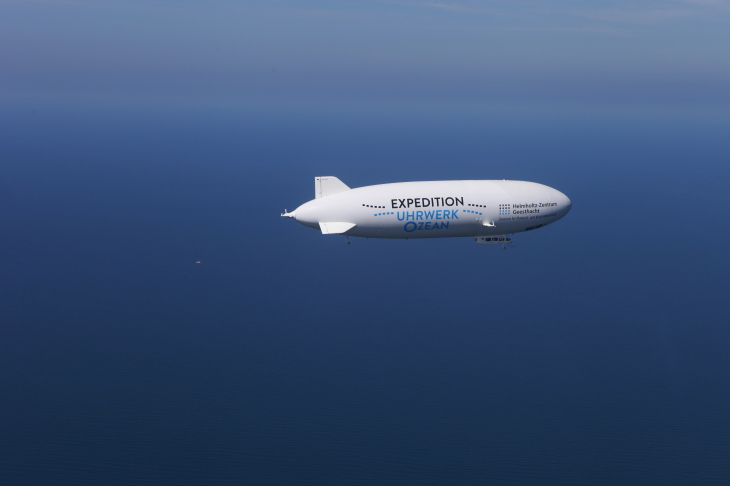
The View from Above
The scientists’ goal is to detect and measure the small ocean eddies, which means optimal measurement conditions are necessary. The airplanes that have thus far been used and which were equipped with thermal imaging cameras, which could take a series of “snapshots,” have now been replaced by a zeppelin. The zeppelin can park above the eddy while taking measurements, thus enabling the special cameras to keep the eddy in view.
The King of Airship Aviation
The Zeppelin NT with its home base in Friedrichshafen is one of the most distinctive aircraft of our time and is made available to the scientists. The newest generation of zeppelin takes the experts approximately one kilometre high over the expedition region and, with a view from above, detects the constantly moving and rapidly collapsing eddies. The immense advantage of a zeppelin over all other aircraft is skilfully employed here: the zeppelin’s ability to perfectly "park” in the air, focussing precisely on one location, assists the scientists in keeping the eddy permanently in view and for helping to coordinate the research vessels.
Technology That Inspires
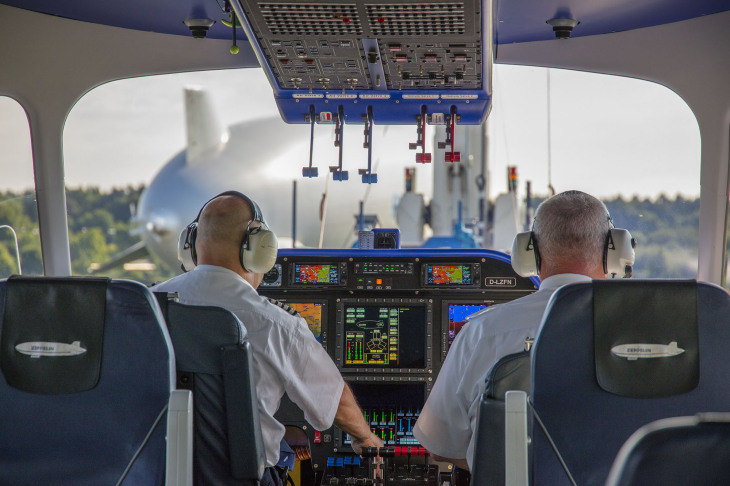
The Zeppelin has an overall length of seventy-five meters, is nearly twenty meters wide and is over seventeen meters high. It can achieve a maximum speed of 125 kilometres per hour. Equipment on board includes infrared and hyperspectral cameras and what is known as an inertial navigation system (INS) with GPS. The INS is a measuring system that permanently determines the position and the three-dimensional movement of the zeppelin.
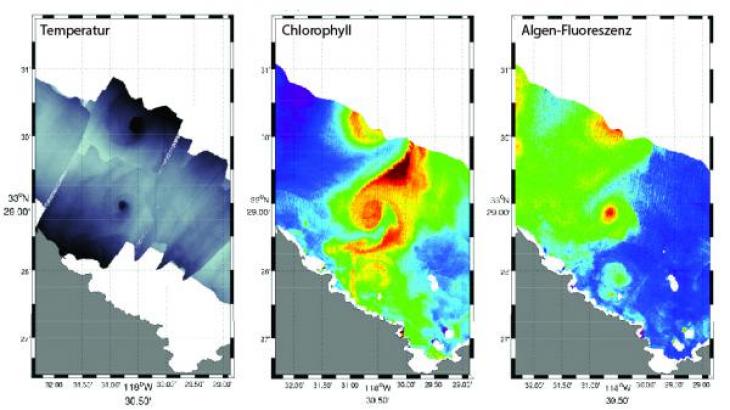
A Research Day Aboard the Zeppelin
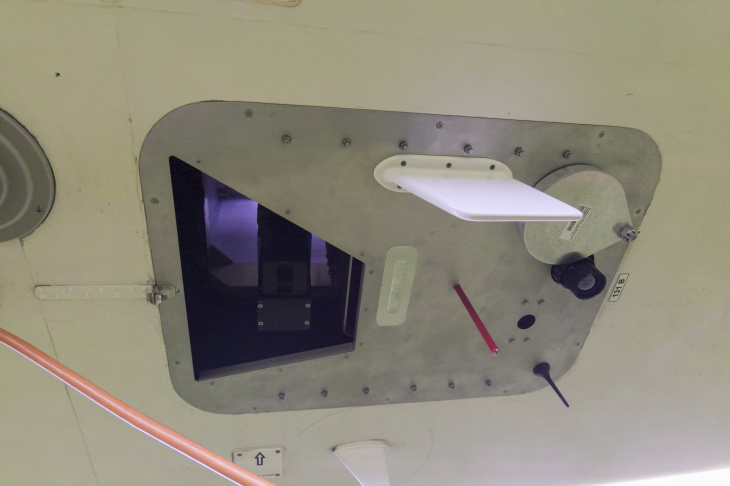
The expedition in summer of 2016 carried out over ten days. On which days experiments are conducted depends on every expedition heavily on the local weather conditions.
A typical day, for example, unfolds as follows:
6:00 a.m.
Depart from Usedom. Flight distance of approximately 100 km in the direction of the target area, south of the Bornholm Basin, with an airspeed of 70 km per hour at a height of approximately 1000 metres. The research vessels Ludwig Prandtl, Elizabeth Mann-Borgese and Eddy navigate from Bornholm into the target area, where they wait until the Zeppelin locates an eddy.
7:30 a.m.
Arrival in the target research region. Subsequent raster-like scanning of the water’s surface, with the help of on-board infrared and hyperspectral cameras, which detect ocean eddies and fronts and then take the first measurements.
When an eddy is located, the scientists must act fast: they navigate their research ships to the eddy so they can measure it before it collapses.
The research vessel Eddy arrives quickly at a speed of 70 km per hour and the measurement instruments are deployed. The Ludwig Prandtl and the Elisabeth Mann Borgese follow shortly afterward. Now the ocean gliders, drifters and swarm robots are put to use.
9:20 a.m.
Small detected eddies or fronts measuring approximately 200 meters to 3 km in diameter are registered and examined in more detail. The eddies are then scanned from the air using three different measurement methods. This work takes about five hours.
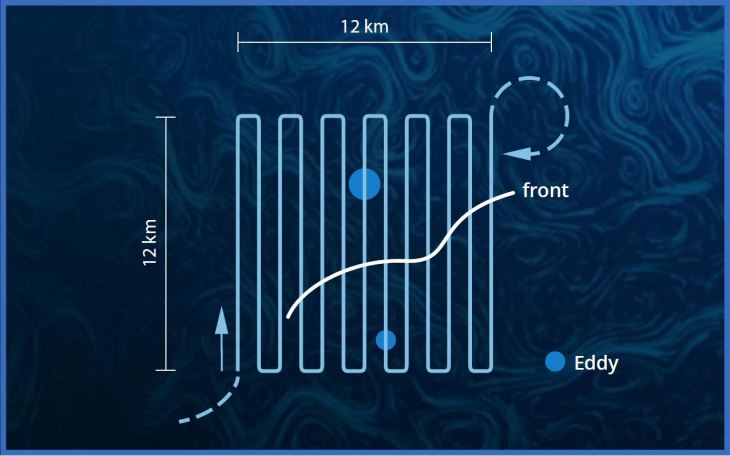
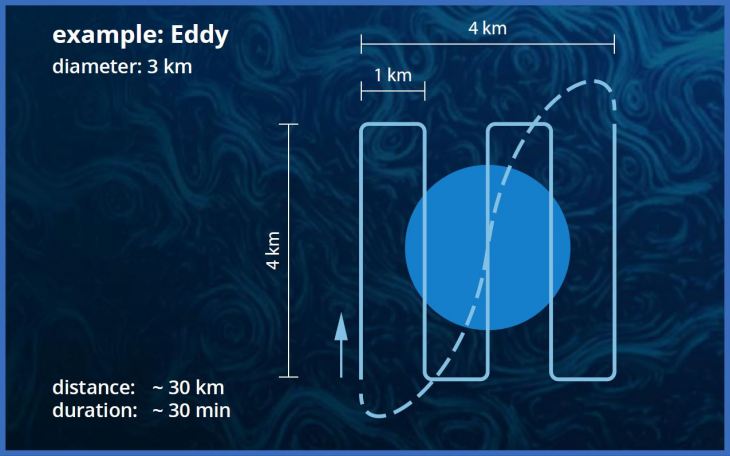
Method 1:
Slow circling and fly-overs of the target object for more precise values and results within a small perimeter: speed of approximately 40 to 60 km per hour at a height of 1000 meters with a total duration of approximately three hours.
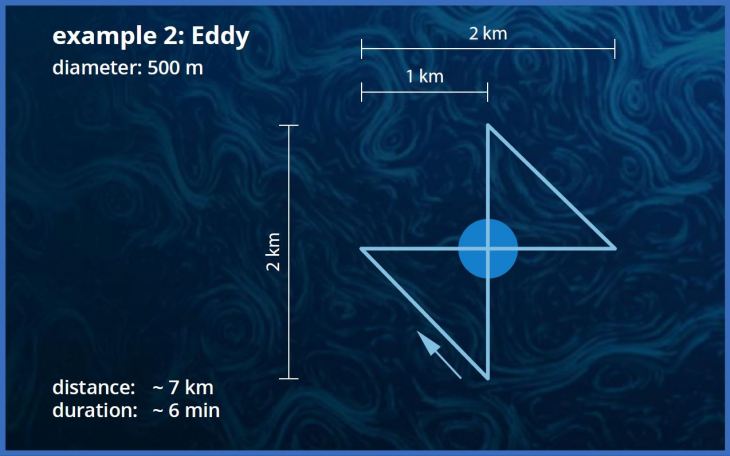
Method 2:
Sequence remains the same as Method 1, but at a height of 300 to 500 meters with a speed of 30 km per hour and a total duration of approximately one hour.
Method 3 (without figure):
Stationary "parking" of the zeppelin approximately 1000 meters above an eddy or a front with a total duration of approximately one hour.
6:00 a.m.
Motor glider explores the research site early in the morning. As soon as an eddy or a front is located the zeppelin and research ships are informed.
9:00 a.m. to 2 p.m.
The ocean eddy is constantly observed from the zeppelin. The zeppelin sends the thermal images of the eddy to the ships so that they target the deployment of the measurement instruments. The eddy is measured again and again for approximately five hours to determine how its energy is slowly lost to friction and how microalgae react to the transport of nutrients within the eddy.
End of the Measurements
after 3:30 p.m.
after 3:30 p.m.
Evaluating first measurements, instrument cleaning and discussing measurements for the following days.